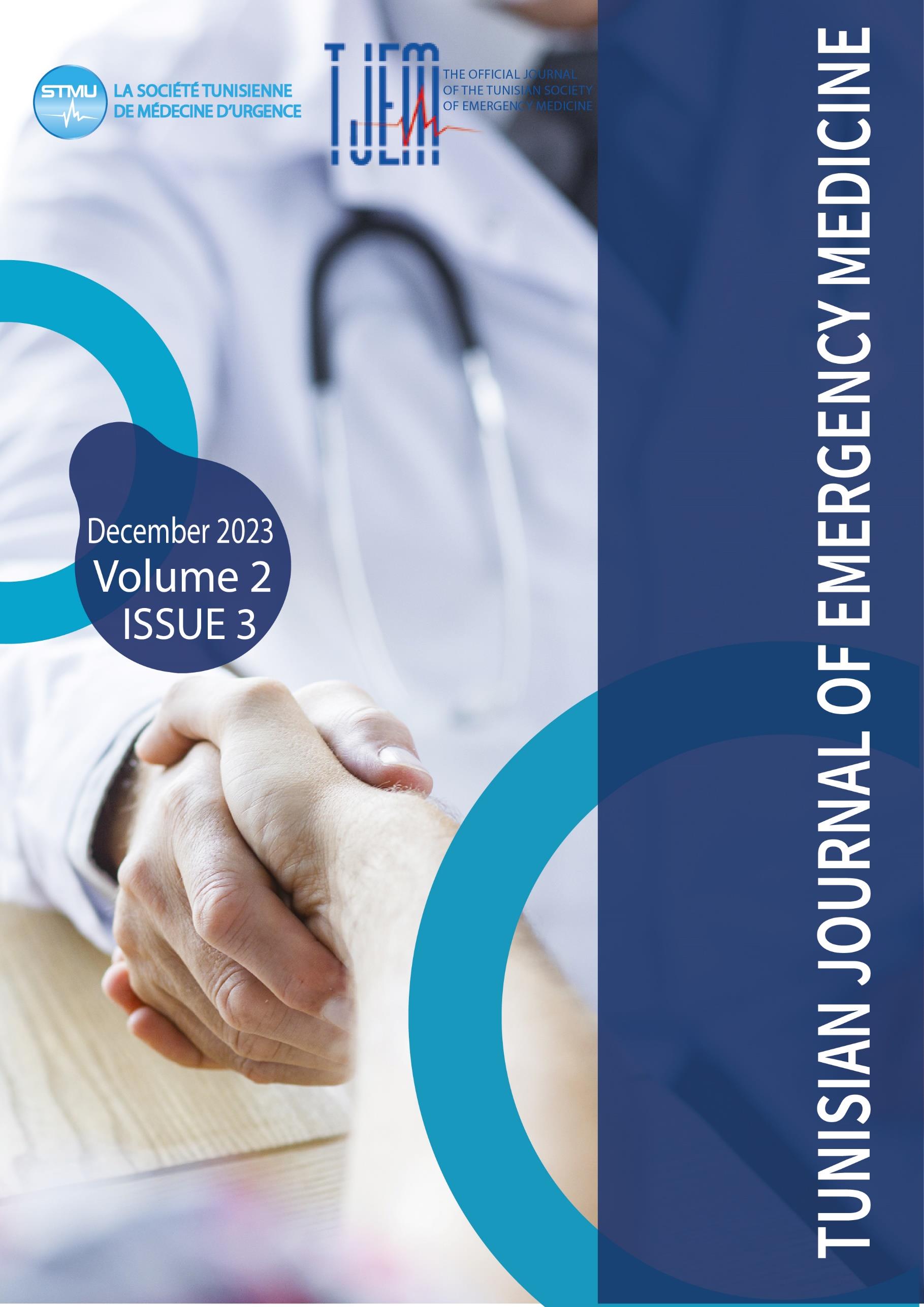A measles outbreak in Tunisia: Experience of an Emergency Department in Sousse
Insaf Missaoui, Mariem Khrouf, Houda Ben Soltane, Ines Ouaz,Zied Mezgar, Mehdi Methamem.
DOI:
https://doi.org/10.0000/d9gr2w12Keywords:
Measles;, Outcomes, Epidemiology, EmergencyAbstract
Background: Measles is one of the most contagious diseases of humans. It is caused by the measles virus and occurs as a seasonal disease in endemic areas[1]. We describe the epidemiologic features of a measles outbreak in Tunisia, specifically in the city of Sousse within the Emergency Department (ED) of Farhat Hached.
Methods: We performed descriptive analyses of data on demographic characteristics, clinical and laboratory evaluations, clinical outcomes of all declared measles cases and containment measures in the ED of Farhat Hached in Sousse during the period of two months (March to April 2019).
Results: During the current ongoing measles outbreak in Tunisia, a total of 57 confirmed measles cases have encountered our ED and have been declared. 61.4% of the studied population were men and 31.6% were unvaccinated. The median age of measles patients was35 years [16;55].12.3% of them were health care providers working at the ED of Farhat Hached.
The main clinical presentations were eruptive fever (64.9%), eruptive fever with gastrointestinal disorders (21.1%) and eruptive fever with dyspnea (14%).35.1% of all patients were hospitalized with a mean hospital length of stay of 4.53 days (±1.92 ).
The vaccination status of infected patients seemed to their hospitalization rate as 44.4% of the unvaccinated patients were admitted to the infectious diseases ward while only 27% of the vaccinated patients were hospitalized.
Conclusion: Up to this date, measles cases including health care professionals are still being diagnosed in the ED of Farhat Hached in Sousse. Thus, response strategies should provide a better vaccination coverage within the exposed population as well as effective containment measures.
Downloads
Published
Issue
Section
License
Copyright (c) 2023 Tunisian Journal of Emergency Medicine

This work is licensed under a Creative Commons Attribution-NonCommercial-ShareAlike 4.0 International License.
How to Cite
Similar Articles
- Houda BEN SOLTANE, Neurologic manifestations of infective endocarditis , Tunisian Journal of Emergency Medicine: Vol. 2 No. 3 (2023): TJEM Vol2 Issue3
- Ikhlass BEN AICHA, Importance of Simulation in setting up ultrasoundguided vascular access , Tunisian Journal of Emergency Medicine: Vol. 2 No. 2 (2022): TJEM Vol2 Issue2
- Management of mass disasters related to the sinking of clandestine immigrants , Tunisian Journal of Emergency Medicine: Vol. 2 No. 2 (2022): TJEM Vol2 Issue2
- Hanen GHAZELI, De Winters ST-T syndrome: an early sign of STsegment elevation myocardial infarction (A case report) , Tunisian Journal of Emergency Medicine: Vol. 2 No. 2 (2022): TJEM Vol2 Issue2
- Olfa chakroun-walha, Orchis satyrium; an intoxication by a medicinal herb , Tunisian Journal of Emergency Medicine: Vol. 2 No. 2 (2022): TJEM Vol2 Issue2
- Dorra Loghmari , The beneficial learning by simulation in the acquisition of non-technical skills among medical students , Tunisian Journal of Emergency Medicine: Vol. 2 No. 3 (2023): TJEM Vol2 Issue3
- Olfa chakroun-walha, Overview of the post-night shift syndrome in the COVID-19 pandemic era: predictors in a North African sample of physicians , Tunisian Journal of Emergency Medicine: Vol. 2 No. 3 (2023): TJEM Vol2 Issue3
You may also start an advanced similarity search for this article.

